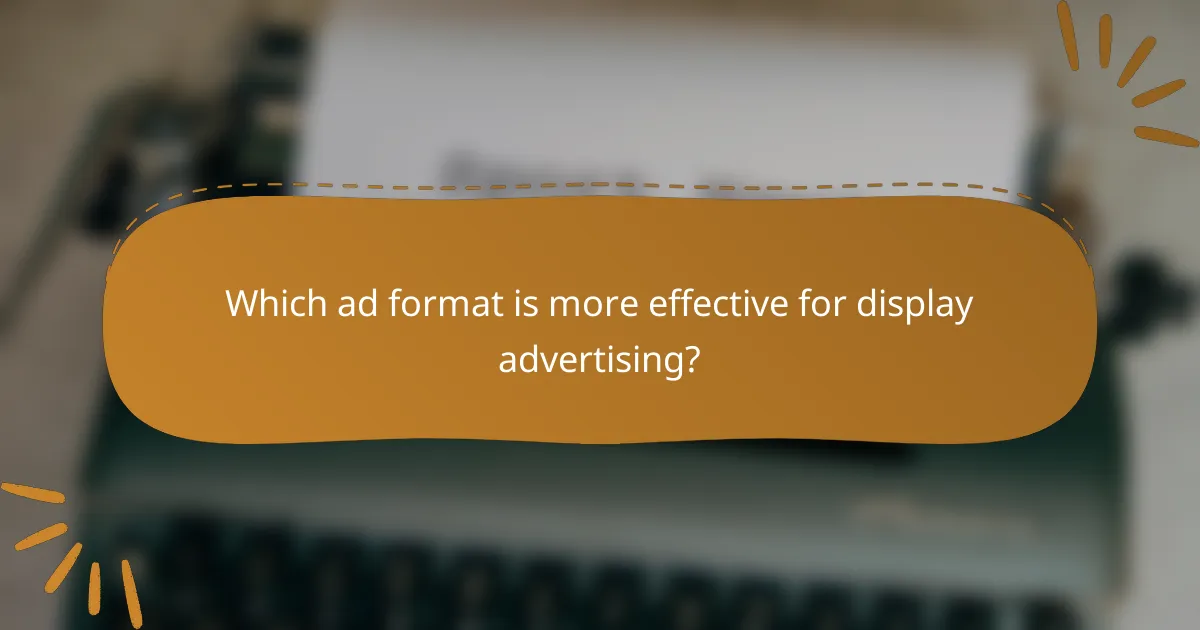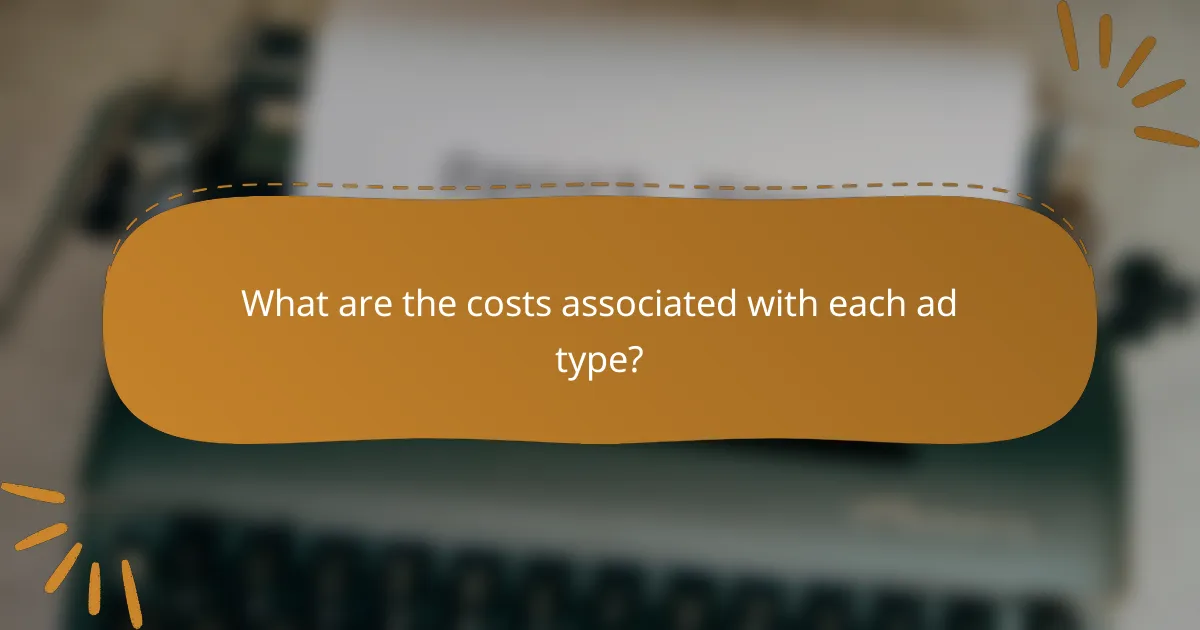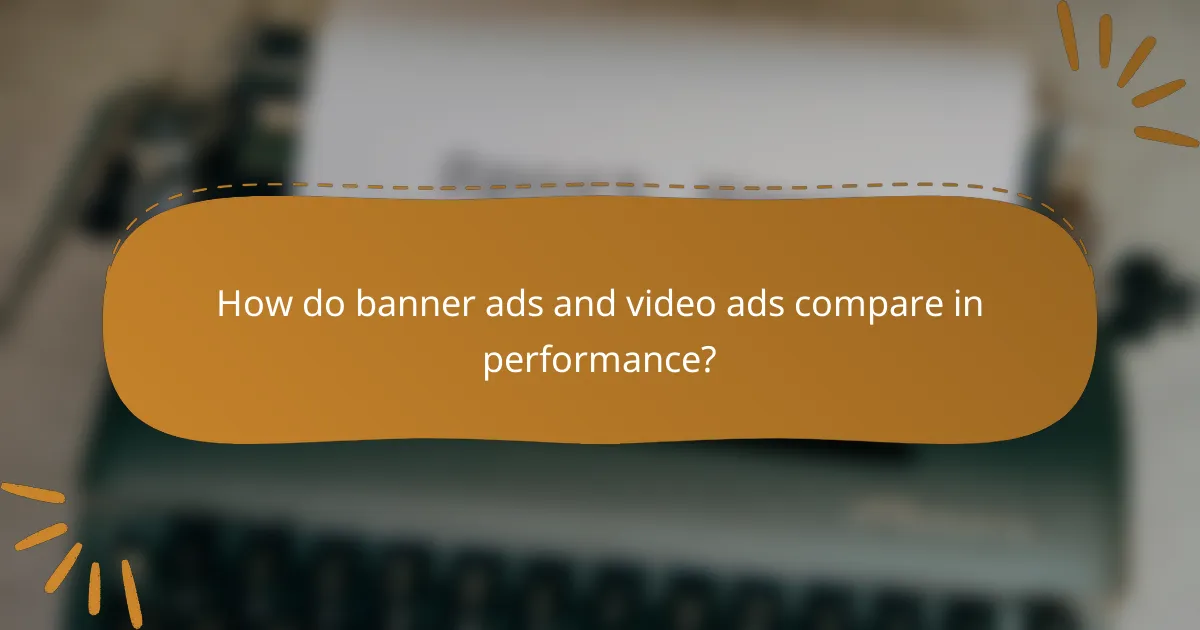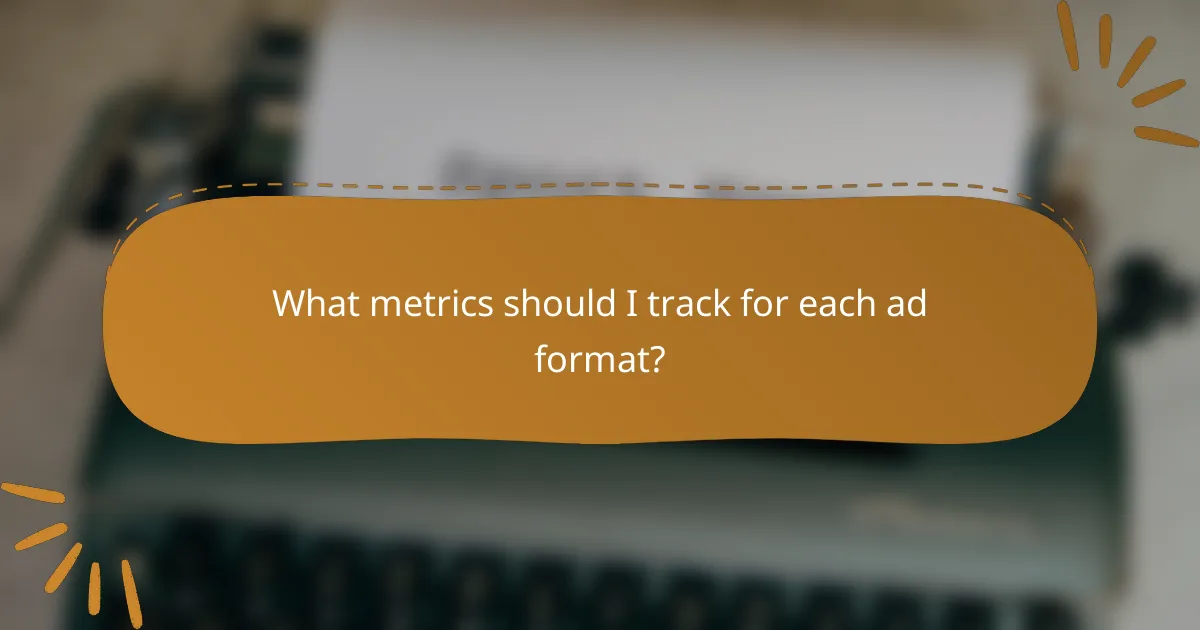When it comes to display advertising, both banner ads and video ads offer distinct advantages that cater to different marketing objectives. The decision on which format to use hinges on your campaign goals, target audience, and the level of engagement you wish to achieve.

Which ad format is more effective for display advertising?
Both banner ads and video ads have unique strengths in display advertising, making them effective in different contexts. The choice between them depends on campaign goals, target audience, and the desired engagement level.
Banner ads offer high visibility
Banner ads are designed to be eye-catching and can be placed on various websites, ensuring broad visibility. They often feature static images or animations that attract attention quickly, making them suitable for brand awareness campaigns.
These ads typically have a lower production cost compared to video ads, allowing businesses to run multiple campaigns simultaneously. Their placement on high-traffic sites can lead to significant impressions, which is crucial for reaching a large audience.
Video ads engage viewers more
Video ads tend to capture viewer attention more effectively than banner ads due to their dynamic nature. They can convey a story or message in a more engaging way, which often results in higher viewer retention and emotional connection.
Platforms like YouTube and social media channels facilitate video ad placements, allowing for targeted reach. While production costs can be higher, the potential for higher engagement rates often justifies the investment.
Conversion rates differ by format
Conversion rates for banner ads and video ads can vary significantly based on the audience and content. Banner ads may yield lower conversion rates, typically in the low single digits, as they often serve more to create awareness than to drive immediate action.
In contrast, video ads can achieve higher conversion rates, sometimes reaching double digits, especially when they include clear calls to action and are well-targeted. The format’s ability to tell a story can lead to a stronger motivation for viewers to engage with the brand.
Target audience impacts effectiveness
The effectiveness of banner and video ads largely depends on the target audience’s preferences and behaviors. Younger demographics may respond better to video content, while older audiences might prefer the simplicity of banner ads.
Understanding the audience’s media consumption habits is crucial. For instance, if the target group frequently engages with video content on social media, investing in video ads could yield better results. Conversely, if they browse websites primarily for quick information, banner ads may be more effective.

When should I use banner ads?
Banner ads are best utilized when you aim to increase visibility and drive traffic to your website. They work effectively for brand awareness, retargeting, and quick promotions, allowing you to reach a broad audience with visually appealing content.
Best for brand awareness campaigns
Banner ads excel in brand awareness campaigns by providing a consistent visual presence across various websites. They can help establish brand identity and recognition, especially when placed on high-traffic sites relevant to your target audience.
Consider using eye-catching designs and clear messaging to capture attention. A/B testing different creatives can also help identify which designs resonate best with your audience.
Effective for retargeting strategies
Retargeting with banner ads allows you to reconnect with users who have previously interacted with your brand. By displaying ads to these users, you can remind them of products or services they showed interest in, increasing the likelihood of conversion.
Utilize dynamic ads that showcase specific products viewed by the user. This personalized approach can significantly enhance engagement and drive higher click-through rates.
Ideal for quick promotions
Banner ads are particularly effective for promoting limited-time offers or sales. Their ability to quickly convey information makes them suitable for driving immediate action from potential customers.
When running a promotion, ensure your banner includes a clear call-to-action and highlights the urgency, such as “Limited Time Only” or “Sale Ends Soon.” This can motivate users to act swiftly and take advantage of the offer.

When should I use video ads?
Video ads are ideal when you want to convey a message that requires more than just visuals or text. They are particularly effective for engaging audiences and delivering complex information in a memorable way.
Great for storytelling and engagement
Video ads excel at storytelling, allowing brands to create narratives that resonate with viewers. By using visuals, sound, and motion, they can capture attention and maintain interest more effectively than static ads.
Consider using video ads for campaigns that aim to build brand identity or convey a message with emotional depth. Short videos, typically ranging from 15 to 60 seconds, can effectively tell a story without overwhelming the audience.
Useful for product demonstrations
Video ads are particularly useful for showcasing how a product works. Demonstrations can clarify features and benefits, making it easier for potential customers to understand the value of what you are offering.
For example, a tech company might use a video ad to demonstrate the functionality of a new gadget, highlighting its unique features in action. This approach can significantly increase conversion rates, especially for complex products.
Effective for emotional connection
Video ads can create strong emotional connections by using visuals and music to evoke feelings. This emotional engagement can lead to higher brand loyalty and customer retention.
Brands often leverage storytelling in video ads to connect with audiences on a personal level. For instance, a charity might share a heartfelt story through a video ad to inspire donations, making the cause more relatable and urgent.

What are the costs associated with each ad type?
The costs associated with banner ads and video ads can vary significantly based on various factors, including production quality, placement, and audience targeting. Generally, banner ads tend to be more budget-friendly, while video ads often require a larger investment due to production and distribution expenses.
Banner ads typically have lower costs
Banner ads are usually more affordable than video ads, making them an attractive option for businesses with limited budgets. The costs can range from a few dollars to several hundred dollars per month, depending on the ad placement and the platform used.
For instance, running a banner ad on social media or a website can cost between 0.10 to 2.00 USD per click, depending on the competitiveness of the market. This lower cost allows businesses to run multiple campaigns simultaneously without overspending.
Video ads require higher production budgets
Video ads generally demand a higher production budget due to the need for scripting, filming, and editing. Costs can start from a few hundred dollars for simple animations and can escalate to thousands of dollars for high-quality, professionally produced videos.
In addition to production costs, video ads may incur higher distribution expenses, especially if they are placed on premium platforms like YouTube or during popular TV shows. Businesses should be prepared to allocate a significant budget for effective video advertising.
Cost-per-click varies by format
The cost-per-click (CPC) for banner ads and video ads can differ based on the format and platform. Banner ads typically have a lower CPC, often ranging from 0.10 to 1.00 USD, while video ads can have a CPC that ranges from 0.20 to 3.00 USD or more, depending on the ad’s engagement level.
When choosing between the two, consider the target audience and the intended message. If the goal is to drive immediate traffic, banner ads may be more effective. However, if brand storytelling is the focus, investing in video ads could yield better long-term results.

How do banner ads and video ads compare in performance?
Banner ads and video ads differ significantly in performance metrics, particularly in terms of engagement and click-through rates (CTR). Video ads tend to capture more attention and generate higher CTRs, while banner ads often struggle to engage users effectively.
CTR is generally higher for video ads
Video ads typically achieve higher click-through rates compared to banner ads, often reaching double-digit percentages in some campaigns. This is largely due to their dynamic nature, which can convey messages more effectively through visuals and sound.
For example, a well-crafted video ad can engage viewers for longer periods, prompting them to take action. Brands often leverage storytelling in video ads to create emotional connections, which can lead to increased conversions.
Banner ads have lower engagement rates
Banner ads generally experience lower engagement rates, often falling into the low single digits for CTR. Users tend to overlook static images or text, especially when they are displayed in crowded online environments.
To improve performance, advertisers should focus on clear calls to action and eye-catching designs. However, even with these enhancements, banner ads may still struggle to compete with the immersive experience of video content.

What metrics should I track for each ad format?
When evaluating banner ads and video ads, focus on specific metrics that reveal their effectiveness. For banner ads, track impressions and clicks, while for video ads, view-through rates are crucial to understanding engagement.
Impressions and clicks for banner ads
Impressions refer to how many times your banner ad is displayed, while clicks indicate how many users interacted with it. A good benchmark for click-through rates (CTR) for banner ads typically ranges from 0.1% to 1%. Monitoring these metrics helps assess the ad’s visibility and user interest.
To optimize performance, consider A/B testing different designs and placements. High impressions with low clicks may suggest that the ad is not compelling enough, prompting a redesign or a change in targeting strategy.
View-through rates for video ads
View-through rates (VTR) measure the percentage of viewers who watched your video ad to completion or a significant portion of it. A VTR of 15% to 30% is often considered effective, depending on the platform and content length. This metric indicates how engaging your video content is.
To improve VTR, focus on creating captivating content within the first few seconds and ensure that your video is relevant to the audience. Avoid overly long videos, as they can lead to drop-offs, especially on social media platforms where attention spans are shorter.
